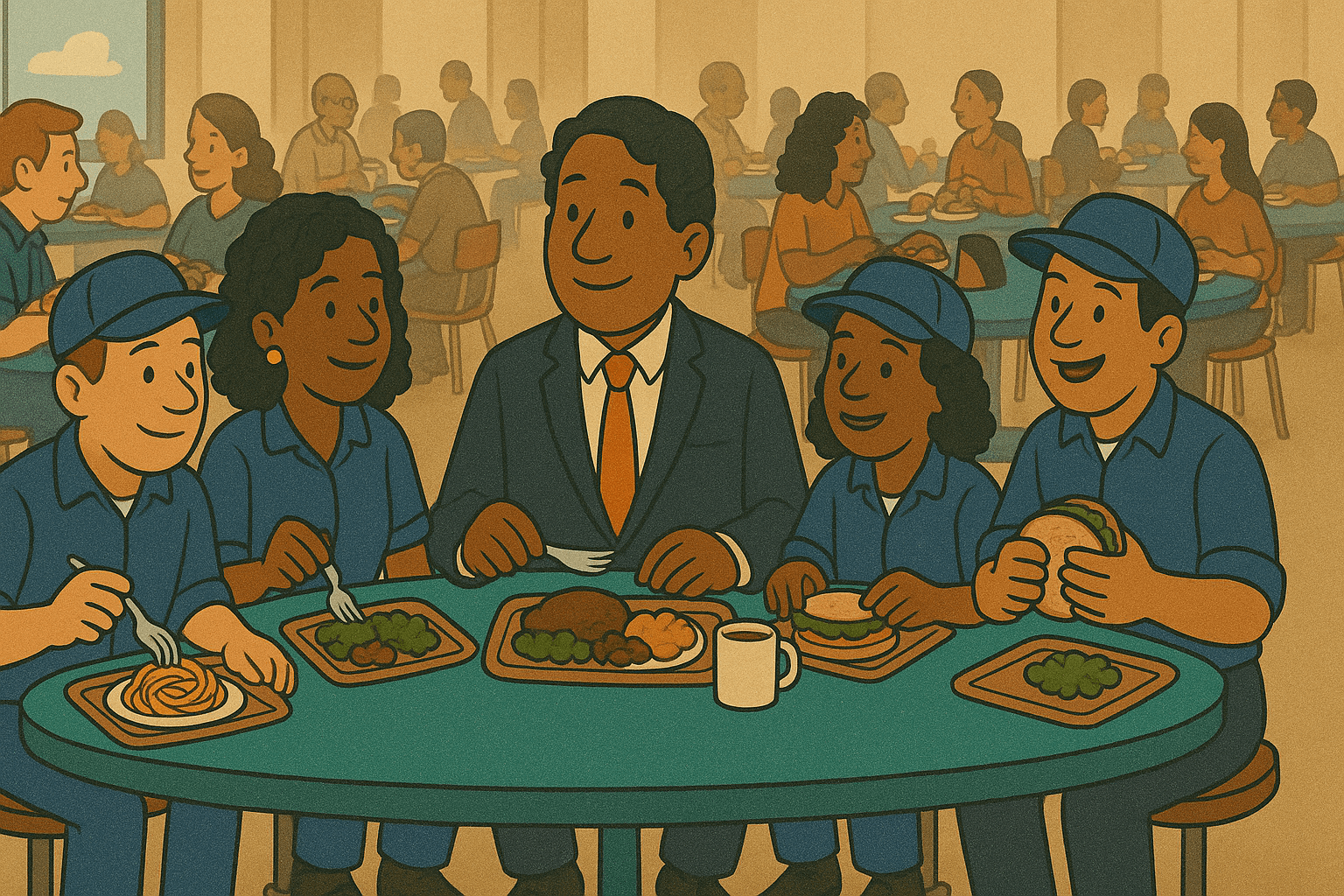Matt Charney said it best: “If HR wants to claim a seat at the table, it needs to start by pulling up a chair in the break room.”
That line stopped me.
We’ve spent the better part of two decades chasing the mythical “seat at the table.” But here’s the uncomfortable truth: most of the people we claim to represent aren’t sitting in boardrooms — they’re standing behind counters, loading trucks, fixing machines, designing products, or serving customers.
So maybe it’s time to change the seat we’re after.
The Unseen Workforce
Matt’s post called out what many leaders already know but rarely admit: frontline workers aren’t asking for culture decks or engagement surveys.
They’re not asking for culture decks or engagement slogans…. They’re asking for better managers, real development, and mutual respect. They want conversations that go both ways — not another HR initiative that talks at them. What they’re really saying is simple:
Listen to us.
Because when you stop long enough to hear them, you realize they’re not the “frontline”, they’re the engine that drives organizational strategy. The work doesn’t move without them. Yet too often, we talk about them as a cost to control rather than a capability to unleash.
If we truly believe in partnership, then let’s start treating them as the true business partners they are — the ones building the product, meeting the customer, holding the line when things get hard. The real culture lives there, not in a slide deck.
They’re not asking HR to “reimagine” work; they’re asking HR to show up where work happens.
Becoming a Student of the Workforce
I once worked at a company where our largest job family was designers. At another, it was aircraft mechanics. Two very different workforces, yet the same lesson applied — you can’t lead people you don’t understand.
That’s why I use the phrase “become a student of” your workforce. Don’t just analyze their turnover numbers or engagement scores. Study their world. Learn their language. Sit in their space.
I used to hold what I called a “Board of Directors” — not with executives, but with workers
themselves. A cross-section of employees who became my internal truth-tellers. No senior
leaders allowed. We’d sit down and talk:
What’s working?
What’s broken?
What are we missing?
What do you wish leadership knew but never asks?
Those conversations taught me more about culture than any pulse survey ever could.
Where HR Needs to Be
I have a friend who’s the CHRO of UPS. Every year, he rides delivery routes — shoulder to shoulder with drivers —to see and feel the reality of the work.
Another CEO I know eats in the employee cafeteria, no entourage, just conversation.
That’s leadership proximity. And it’s where HR should live.
We talk a lot about workforce architecture — connecting business strategy to people strategy. But the architecture means nothing if the foundation (the frontline) is crumbling.
If you want to understand your organization’s culture, skip the conference room. Spend a day where the real work happens.
A Call to the HR Profession
Here’s a simple exercise: Pick the one job family that drives your organization’s strategy — or drains your turnover budget. Spend time there. Observe. Listen. Ask what success looks like to them.
That’s how you build trust. That’s how you make strategy real. And that’s how HR earns a seat that actually matters — not at the boardroom table, but at the tables where your people eat lunch, share stories, and quietly decide whether they’ll give your organization another year of their lives.
Because leadership isn’t just about who’s in the room, it’s about who we make room for.
